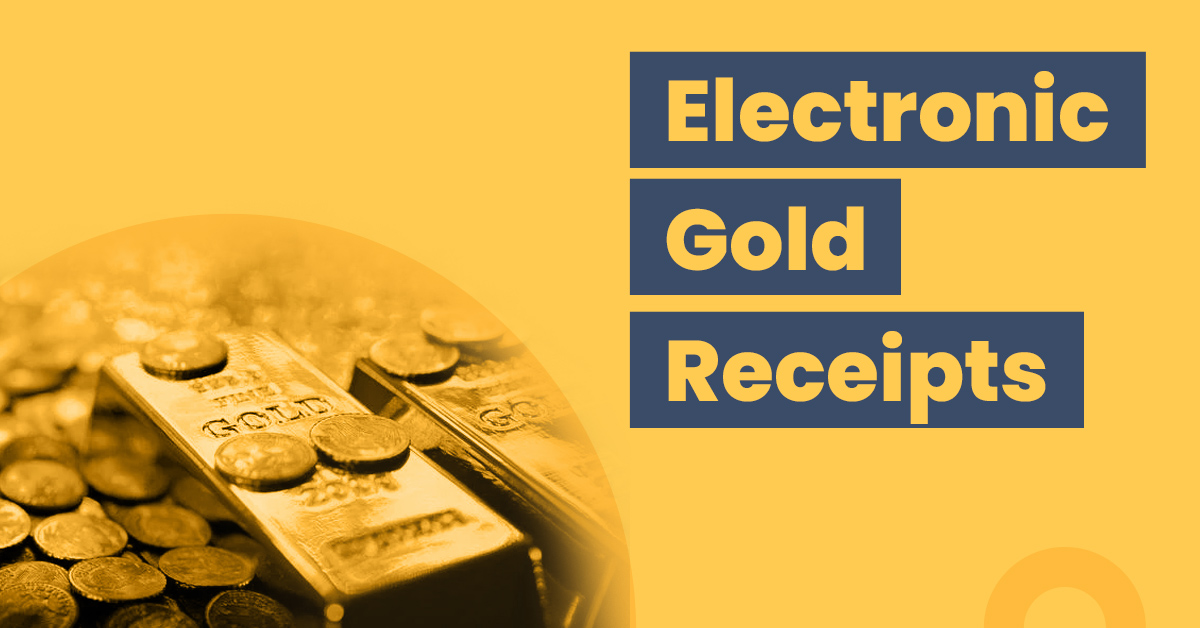What Are Electronic Gold Receipts (EGR)? Meaning, Price, How to Buy


India Gold Policy Centre (IGPC) conducted a gold consumption survey and found that Indians with an annual income between ₹2 lakhs and ₹10 lakhs are the country’s highest gold consumers. Despite massive demand for gold, there was no liquid spot market price for price discovery until recently in India.
In September 2021, SEBI (Securities Exchange Board of India) introduced the guidelines for spot trading in gold and approved the setting up a gold exchange. As per these guidelines, BSE (Bombay Stock Exchange) introduced the country’s first Electronic Gold Receipts (EGRs) for all market participants on October 24, 2022.
In this article, you’ll learn the meaning of Electronic gold receipts, how it works, their benefits and how to buy EGR.
What Are Electronic Gold Receipts?
Electronic Gold Receipts are depository gold receipts held in Demat accounts and traded in stock exchanges like dematerialised stocks. In simple words, it is an electronic receipt based on deposits of physical gold regulated by SEBI.
They work as receipts for physical gold held in a vault owned by the trading exchange. The stock exchange can source physical gold from deposits in delivery centres, domestic refineries and imports. Investors can redeem physical gold for Electronic Gold Receipts from any empanelled vault manager.
How to Buy Electronic Gold Receipts?
People who wish to buy an EGR need to submit a formal request for depositing physical gold to the vault manager while following the rules and guidelines of SEBI. The vault manager will then assess the gold quality to ensure it meets the standard list of criteria, check the necessary documents and accept the deposit.
Post this, the buyer will receive a depository receipt, and the EGR will then be credited to your demat account and available for trading on BSE.
How Do EGRs Trade?
The trading occurs primarily in three phases—conversion of physical gold to EGRs, trading of EGRs and conversion of EGR to physical gold. Investors who want to buy EGRs can do so using their Demat account. The process is similar to purchasing stocks on BSE.
BSE has introduced two variants of EGR, 995 (with 99.5% purity) and 999 (with 99.9% purity). Currently, these are available in multiples of 1 g, 10 g and 100 g. The stock exchange has plans to introduce variants based on denominations ranging from 1 gram to 1 kg to fulfil the financial requirements of people in different income groups.
Though EGR clearing and settlement is overlooked by clearing corporations, just like equities, futures and options, it would need a multi-level interaction of vaults, banks, retailers and others.
Who Are Responsible for EGRs?
SEBI-accredited vault managers are responsible for storing gold deposits, withdrawing gold, creating EGRs and periodically reconciling the depository records with gold in their storage.
Listed below are the eligibility criteria for a vault manager:
- It has to be a corporate body incorporated in India.
- The net worth of the corporate body must be at least ₹50 crores.
- Apart from registering with SEBI, the vault manager must operate as a SEBI intermediary and provide investors with various vaulting services.
SEBI has ruled that every vault manager must maintain all the documents for gold transfer, purity, withdrawal and storage. Moreover, these records must be maintained for a minimum of 5 years.
As per SEBI’s rule, Electronic Gold Receipts must be made ‘fungible’, i.e., EGR holders can convert the electronic receipts issued by a vault manager at a different vault manager’s facility. This interaction between vault managers makes the entire process of converting and withdrawing more convenient for investors.
Suppose Tina has deposited gold with one vault manager in Mumbai and is currently in Delhi. She can use any EGR in Delhi to withdraw her deposit of physical gold. This is an important feature of EGR as it reduces their expenses.
Why Should People Invest in EGRs?
Listed below are the benefits of the Electronic Gold Receipts facility:
- Both individual investors and commercial entities such as banks, importers, refiners, jewellery manufacturers, retailers and bullion traders can buy and sell EGRs.
- Electronic Gold Receipts provide people with an efficient, electronic and transparent platform for bullion trading.
- Good price discovery, assurance of quality and standardisation are some of the important benefits introduced by the EGR facility.
- You can hold EGRs for as long as you want because they have perpetual validity.
- After surrendering these receipts, you can withdraw the underlying physical gold at your convenience.
Benefits of EGR over other investment options
The table below presents the benefits of EGRs over other investment options:
| Parameters | Electronic Gold Receipts | Physical Gold | Gold ETF/Mutual Fund | Sovereign Gold Bonds |
| Interest | No | No | No | Yes |
| Safety | High | Low | High | High |
| Liquidity | High | Moderate | High | Low |
| Tenure | Perpetual | Perpetual | Perpetual | 8 Years |
| STT | Yes | No | No | No |
| GST | Applicable only while converting EGRs to physical gold | Yes | No | No |
| Capital Gains Tax | Yes | Yes | Yes | No |
Taxation of Electronic Gold Receipts
According to SEBI, Electronic Gold Receipts will be taxed as securities under the Securities Contract Act and Securities Transaction Tax (STT) will be applicable. GST applies only if investors wish to convert their EGRs to physical gold. This is a major advantage of EGRs over physical and digital gold, both of which attract a 3% GST.
If an individual holds an EGR for more than 3 years, long-term capital gains (LTCG) tax of 20% will be applicable with indexation benefits. Indexation will allow you to adjust the purchase cost of physical gold to compensate for inflation’s effects.
An important point to remember is that the owner of an EGR needs to pay the stipulated storage or vaulting charges at the end of a trading day. The beneficiary of the EGR wishing to withdraw physical gold also needs to bear the delivery charges. This will reduce security risks, though it will increase the overall expenses of EGRs.
Final Word
Gold is always an excellent option to add to one’s investment portfolio as it acts as a hedge against inflation and helps people to overcome financial uncertainty. Electronic Gold Receipts, approved by SEBI recently, introduced transparency in gold spot transactions and are expected to help India to emerge as a price setter.
Frequently Asked Questions
Which is the first exchange to launch EGRs in India?
Bombay Stock Exchange (BSE) is the first stock exchange in India to launch Electronic Gold Receipts. It provides investors with the benefit of an effective, electronic, transparent platform for bullion trading.
Will NSE launch EGRs?
National Stock Exchange (NSE), another established stock exchange in India, is expected to launch EGRs soon. Currently, SEBI is dealing with some taxation issues related to the product.
Why were EGRs launched in India?
Despite being an important consumer of gold, India was a price taker instead of a price setter in the global market. The launch of EGRs seeks to address this issue.
What is spot trading, and how does it work?
Spot trading is a type of transaction where people buy and sell assets at their live market price, also called the spot price. Spot trading must include the physical delivery of currencies and commodities. In India, spot trades are typically settled within two business days.
What is the difference between EGRs and ETFs?
You cannot get physical gold against Gold Exchange Traded Funds (ETF), but Electronic Gold Receipts (EGR) are depository gold receipts, and you can get physical gold against it.




